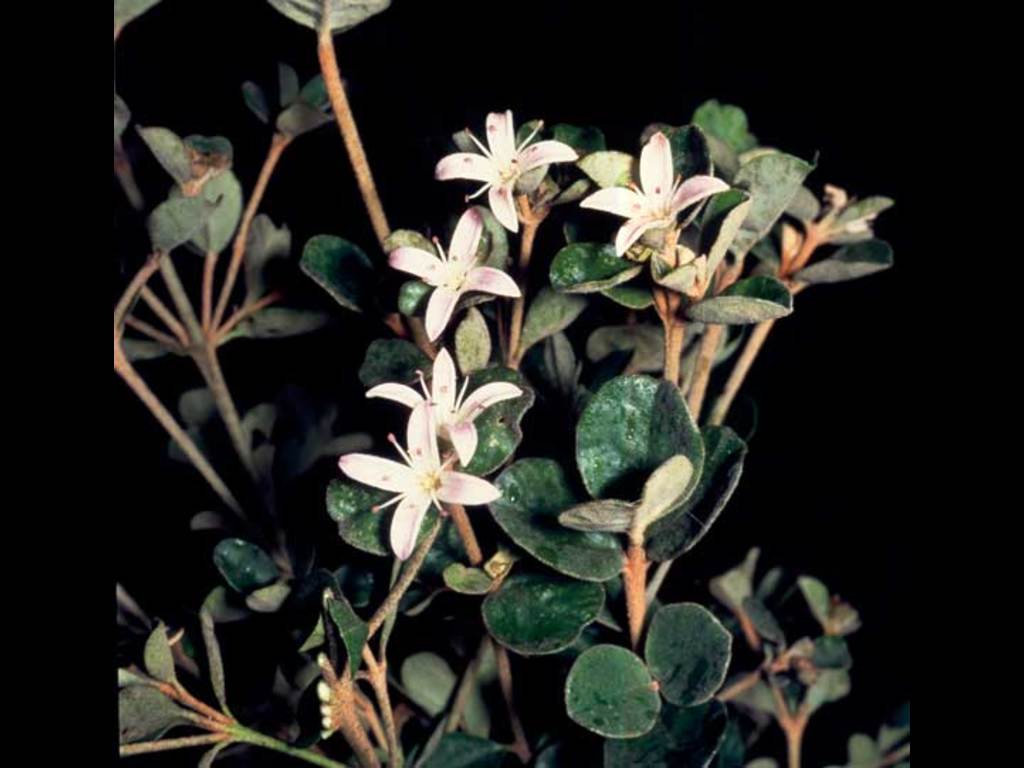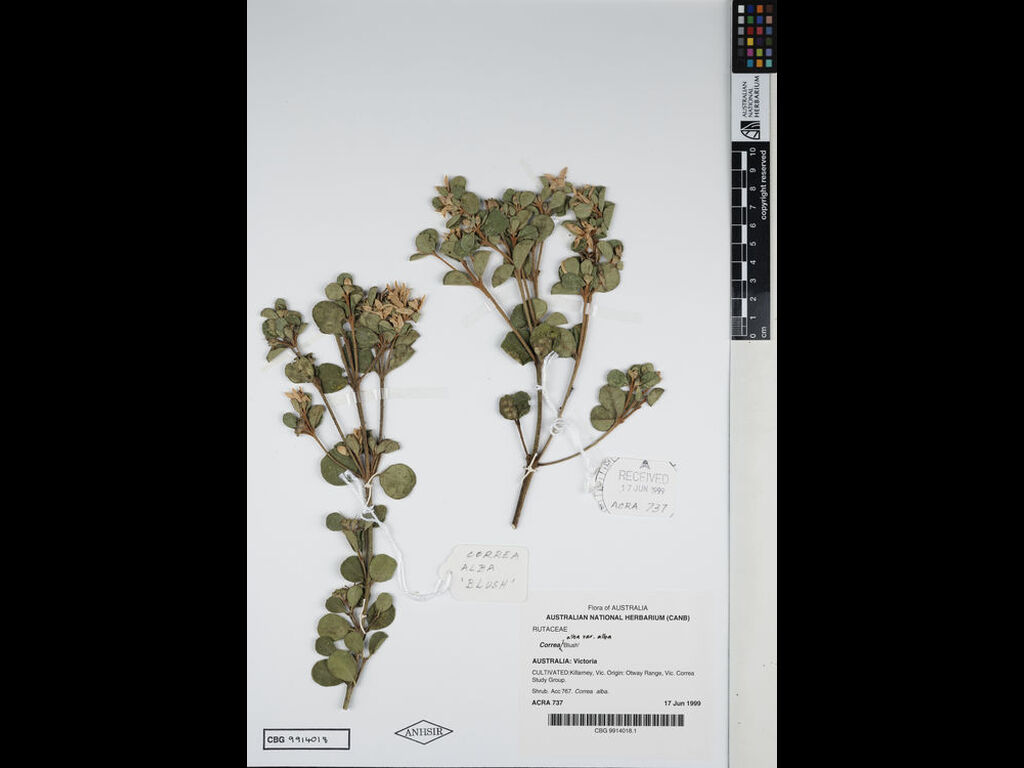Correa alba var. alba 'Blush'
- File Number
- 767
- ACRA Field Book Number
- 737
- Registration Date
- 01/09/1999
- Application Received
- 17/06/1999
- Family
- Rutaceae
- Cultivar Name
- Correa alba var. alba 'Blush'
- Origin
- Correa 'Blush' is a selection of Correa alba var. alba from the coastal Otway region of Victoria. The selection was made by the late Paul Barnett, Carlisle River, Victoria in about 1985. This form is mentioned but not named in Elliot and Jones' 'Encyclopaedia of Australian Plants', Volume 3 page 91. The name refers to the pastel colour of the flowers..
- Characteristics
- Erect medium sized shrub to c. 2m x 2m with a dense habit. Branchlets finely tomentose with rust-coloured stellate hairs becoming green and glabrous with occasional clusters of stellate hairs. Simple leaves broad elliptic or sub-circular, 20 mm x 20 mm. Leaf tips slightly emarginate, leaf bases oblique, venation reticulate, margins slightly recurved. Upper surfaces of mature leaves dark green and coriaceous with occasional minute hairs. Upper surfaces of young leaves minutely tomentose. Corolla 10 mm x 10 mm with petals split to calyx, largely white around margins with pale pink spreading along petal from throat. Peak flowering is from April to June in most districts with spasmodic flowering throughout the year. Diagnosis: The normal flower colour for C. alba var. alba is white. Various forms with pink petals occur naturally in both Victoria and Tasmania. This is one of the naturally occurring forms from Victoria. The descriptive name 'Blush' has been used to differentiate this plant from other C. alba var. alba forms which have white petals. The size and habit of the plant conforms to other C. alba var. alba forms.
- Cultivation
- This cultivar grows vigorously in cultivation. It is frost and drought hardy and has a dense growth habit with erect branches. The shrub is lightly covered with terminal pale pink flowers that mature to grey in colour before shedding. It is easy to grow from cuttings. Correas often do not produce many viable seeds. This form appears to produce seed but viability is unknown. The form would be suited to a wide range of planting sites and soil types. It responds favourably to pruning and would also be suited to hedge planting. Its hardiness and low maintenance requirements make it suitable for amenity and public planting such as shopping centres.
- Publication
- Payne, W.H. (2001), Correa Cultivars. Australian Plants 21(169): 191
- Colour Coding
- RHS Colour Chart 1995 Flowers outer surface: ca. 155 (white) Inner surface: margins white, centre lighter than 66D, Leaves upper surface: 137A Lower surface: 191B
- Propagation
- Cuttings from semi-firm new growth
- Applicant Name
- Ms Cherree Densley, Killarney, Victoria on behalf of the Correa StudyGroup. Received 17th June 1999.
- Uses
- As part of a mass planting or mixed in a shrubbery, or as a feature plant. Attracts nectar feeding birds.
- Availability
- Specialist native plant nurseries
- ANBG Accession Numbers
- ACC767, ACRA737, CBG9914018
- NSL ID
- -

